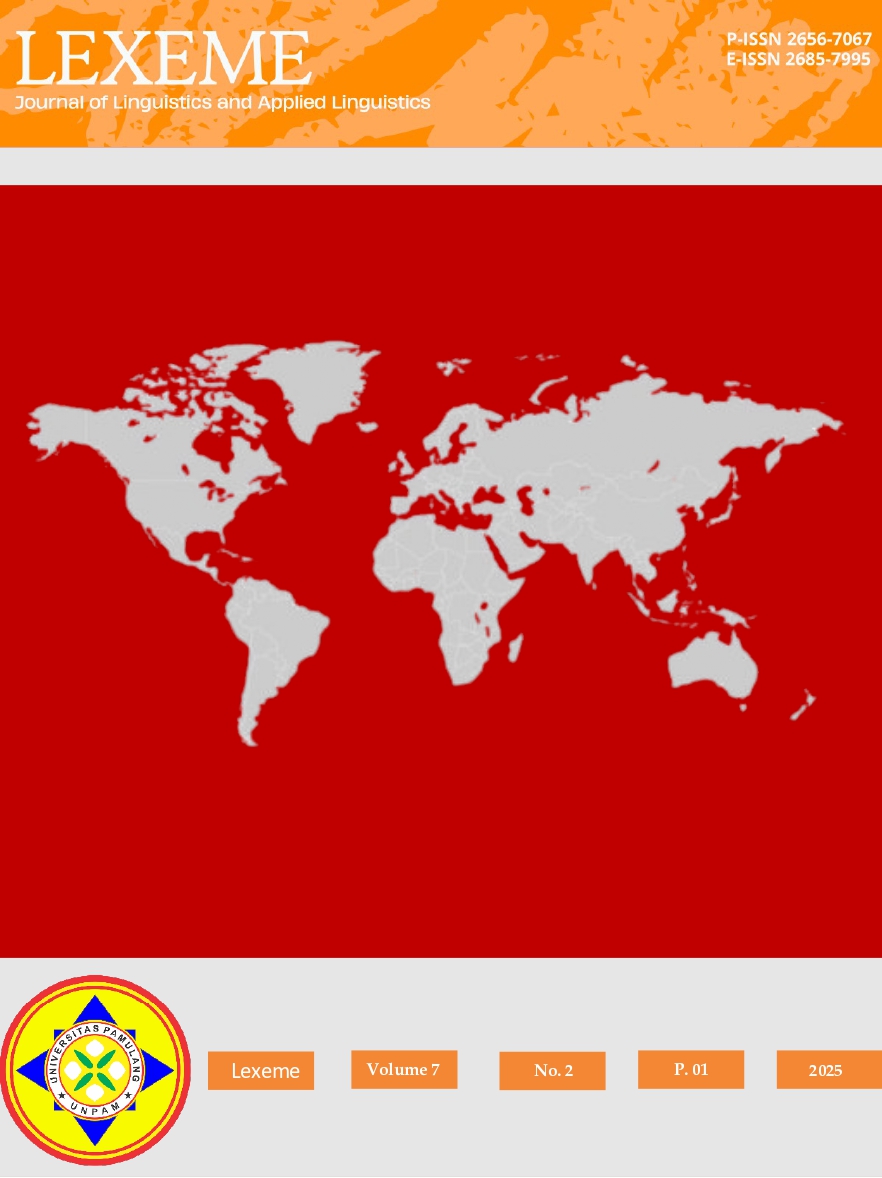Deviations and Good Moral Values in the Novel Pukul Setengah Lima: A Pragmatic Approach
DOI:
https://doi.org/10.32493/ljlal.v7i1.47015Keywords:
English, learning implication, literary criticism, pragmaticAbstract
This study analyzes the moral values both positive and negative depicted through the characters’ actions in the novel “Pukul Setengah Lima” using a pragmatic literary criticism approach. This approach helps researchers interpret the novel’s messages, allowing readers to clearly understand its moral implications. The study employs a qualitative descriptive analysis method, presenting findings through detailed written descriptions. “Pukul Setengah Lima” is a romance novel by the well-known young writer Rintik Sendu. It narrates the love story of a woman and an adult man while exploring various personal and professional conflicts. The novel conveys both commendable moral values that can be applied in real life and negative moral lessons that serve as warnings for readers. Through character analysis, this study identifies negative moral values such as low self-esteem, dishonesty, domestic violence, and betrayal. Conversely, it highlights positive values, including compassion, resilience in facing life’s challenges, and filial piety toward parents. These values are examined through character dialogues and the author's narrative descriptions. This research contributes to a deeper understanding of how literature conveys moral teachings through character interactions and storytelling. Expanding on the pragmatic literary criticism approach with specific examples enhances the clarity of the study’s findings.
References
Ainy, R. N., Hady, G. P., & Hakim, M. L. (2024). Analisis nilai moral dalam novel Ayahku bukan pembohong karya Tere Liye. Jupensial, 1(2), 234–243.
Angraini, D., & Permana, I. (2019). Analisis novel karya Kuriawan Al-Isyhad menggunakan pendekatan pragmatik. Parole Journal, 2(4), 535–542.
Farihah, E., & Sari, R. H. (2022). Analisis nilai moral perjuangan tokoh Sintong Merdeka dalam novel Selamat tinggal karya Tere Liye (pendekatan pragmatik). Jurnal Disastri: Pendidikan Bahasa dan Sastra Indonesia, 4(1), 211–219.
Fernando, M., & Nurdianingsih, F. (2024). Analisis nilai moral dalam novel Putri dari Timur karya Danielle Steel (pendekatan pragmatik). Proceedings of Seminar Nasional Guru dan Konselor, 2101–2114. https://prosiding.ikippgribojonegoro.ac.id/index.php/SNGK/article/view/2799
Kasmawati, K. (2022). Kritik sastra dengan pendekatan pragmatik pada cerpen Malaikat juga tahu karya Dewi Lestari. DIKSI: Jurnal Kajian Pendidikan dan Sosial, 3(2), 253–261. https://doi.org/10.53299/diksi.v3i2.245
Laia, Y. W. (2023). Analisis kritik sastra pragmatik (studi kasus: Novel Namaku Hiroko karya NH. Dini). FAGURU: Jurnal Ilmiah Mahasiswa Keguruan, 2(1). https://doi.org/10.57094/faguru.v2i1.660
Masruroh, M. A., & Setyarum, A. (2022). Analisis aspek pembentuk nilai moral pada novel Pulang karya. Prosiding Konferensi Ilmiah Pendidikan, 3, 837–844.
Mawardy, N. A., & Nurcholish, A. (2021). Analisis kritik sastra dengan pendekatan pragmatik pada Khutbah Syiqsyiqiyyah karya Sayyidina Ali R.A. `A Jamiy: Jurnal Bahasa dan Sastra Arab, 10(2), 360–370. https://doi.org/10.31314/ajamiy.10.2.360-370.2021
Nuha, A., & Afnita. (2024). Analisis novel Pangeran Cilik karya Antoine de Saint-Exupéry menggunakan pendekatan pragmatik. Jurnal Pendidikan dan Teknologi Akademik, 8(1). https://doi.org/10.31004/jptam.v8i1.13708
Downloads
Published
How to Cite
Issue
Section
License
Copyright (c) 2025 Gita Amanda Nur Janah, Indy Baitul Izzah, Cecep Agus

This work is licensed under a Creative Commons Attribution-ShareAlike 4.0 International License.







